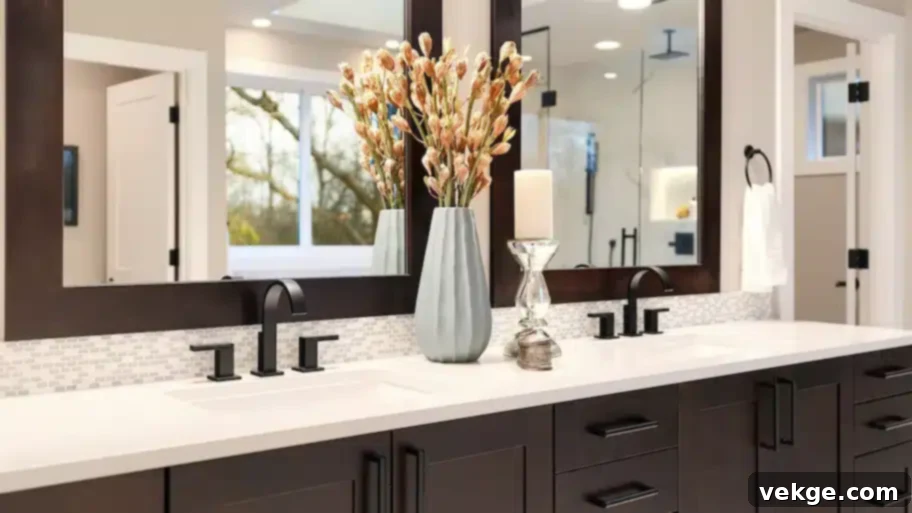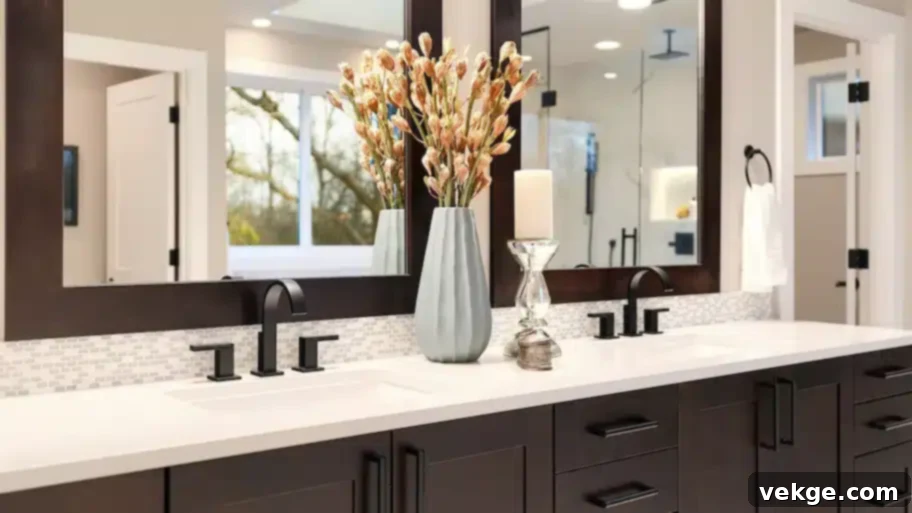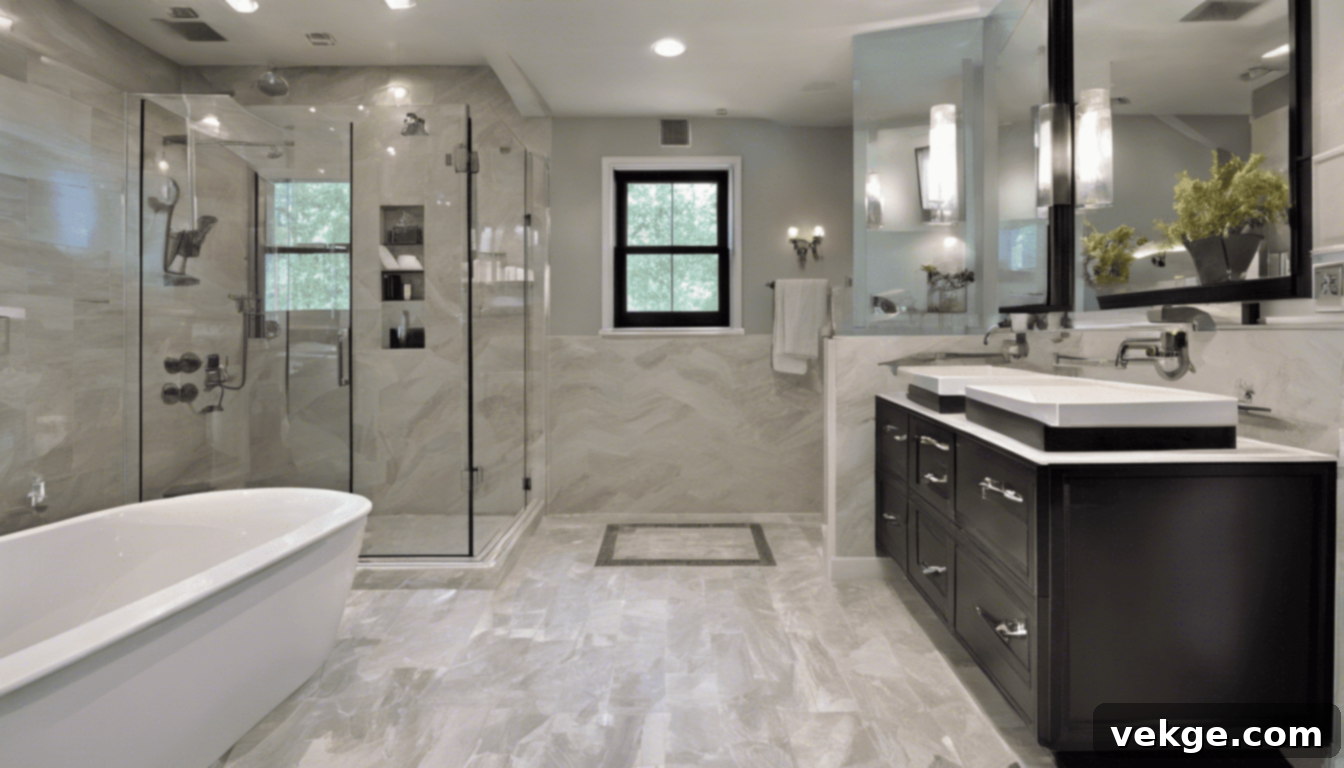Ultimate Guide to Bathroom Remodel Costs: Planning Your Dream Renovation Budget
Embarking on a bathroom remodeling project is one of the most impactful home improvement endeavors a homeowner can undertake. Far more than just a cosmetic update, it’s an opportunity to transform an essential space into a sanctuary of comfort and functionality. From refreshing outdated fixtures and tiles to completely revamping the layout and introducing spa-like amenities, a well-executed bathroom remodel can significantly enhance your home’s aesthetic appeal, daily usability, and overall market value.
However, with the excitement of transformation comes the critical task of financial planning. Understanding the myriad costs involved in a bathroom renovation is paramount, especially when striving to achieve your desired outcome while staying within a realistic budget. This comprehensive guide will break down the various elements that contribute to the final price tag, helping you navigate the complexities of budgeting for your dream bathroom.
Factors Influencing Bathroom Remodeling Costs
When delving into the intricacies of bathroom remodeling costs, it quickly becomes apparent that a multitude of factors play pivotal roles in determining the final expenditure. These elements range from the physical dimensions of your bathroom to the ambitiousness of your design vision. Understanding these core influencers is the first step toward effective budgeting and planning.

Bathroom Size: Does It Really Matter?
Absolutely, bathroom size is a fundamental determinant of remodeling costs. It dictates the quantity of materials needed, the amount of labor required, and the complexity of layout changes. A small powder room or half-bath, for instance, might involve less square footage for flooring and wall tile, and fewer fixtures, leading to a more modest budget. However, even a small space can become expensive if you opt for high-end finishes, custom cabinetry, or significant plumbing reconfigurations to optimize every inch.
Conversely, larger master bathrooms naturally entail more extensive renovations. These often involve dual vanities, larger walk-in showers, separate soaking tubs, and more intricate lighting or storage solutions. More surface area means increased material requirements for flooring, walls, and countertops, as well as additional labor hours for installation. Therefore, understanding your bathroom’s dimensions and how they relate to your design aspirations is crucial for an accurate cost projection.
Scope of the Project: From Cosmetic to Comprehensive
Beyond size, the scope of your renovation project exerts a profound impact on the financial aspect. This refers to the extent of changes you plan to make. Projects can broadly be categorized into three tiers:
- Cosmetic Updates: These are typically the most economical, focusing on refreshing the look without altering the existing layout or major plumbing/electrical systems. Examples include painting, replacing light fixtures, updating faucets, changing cabinet hardware, or regrouting tiles. Such updates can significantly uplift a bathroom’s appearance on a limited budget.
- Mid-Range Renovations: This tier involves more substantial changes, such as replacing existing fixtures (toilet, vanity, bathtub/shower), retiling floors and walls, and potentially making minor layout adjustments that don’t require moving plumbing lines. This level offers a balance between cost and transformative impact.
- Major Overhauls/Luxury Renovations: These are the most expensive, encompassing comprehensive overhauls that might include structural modifications, reconfiguring the entire layout, relocating plumbing and electrical lines, or even expanding the bathroom’s footprint. High-end materials, custom cabinetry, and advanced features (e.g., smart showers, heated floors) are common in this category. Such projects often require permits and professional design services, adding to the overall cost. The more extensive the changes, especially those involving “behind-the-walls” work like plumbing or electrical, the higher the budget will need to be.
Understanding the desired scope enables homeowners to gauge the financial implications accurately and select a renovation level that aligns with both their vision and financial capabilities.
Breakdown of Specific Bathroom Remodeling Costs
To provide a clearer picture of budgeting for your bathroom remodel, let’s look at the specific costs associated with some of the most common and impactful upgrades.
Cost of Installing a New Walk-in Shower
Integrating a new walk-in shower epitomizes a luxurious upgrade that can elevate the ambiance and functionality of any bathroom. Walk-in showers offer a sleek, modern aesthetic and improved accessibility, making them a popular choice for many homeowners. However, such enhancements come with corresponding cost considerations. On average, the cost to install a new walk-in shower ranges from $3,500 to $15,000, with some high-end custom installations exceeding this range.
Several factors influence this cost:
- Design Complexity: A simple, pre-fabricated shower pan with standard tile will be less expensive than a custom, curbless design with intricate mosaic tiling and multiple showerheads.
- Choice of Materials: High-end porcelain, natural stone tiles (like marble or travertine), and custom glass enclosures will increase costs significantly compared to ceramic tiles and standard framed glass doors.
- Features and Fixtures: Rain showerheads, body jets, built-in benches, steam functionality, and smart shower controls all add to the overall price.
- Labor Costs: Custom tile work, plumbing relocation, and specialized glass installation require skilled labor, which impacts the final expense.
Despite the expense, the allure of a spa-like retreat within the confines of one’s home, coupled with improved accessibility and a modern aesthetic, often justifies the investment for many homeowners.
National Average Cost to Install a Bathtub
For those inclined towards traditional bathing experiences, or families with children, installing a bathtub remains a popular choice. The national average cost for this endeavor typically ranges from $1,500 to $10,000. This broad range accounts for the variety of bathtub types and the complexity of installation.
Key factors influencing bathtub installation costs include:
- Type of Bathtub:
- Alcove Tubs: The most common and budget-friendly, typically installed against three walls. Costs range from $400 – $1,500 for the tub itself, plus installation.
- Drop-in Tubs: Designed to be dropped into a framed enclosure, offering a more integrated look. Tubs can range from $600 – $3,000.
- Freestanding Tubs: A luxurious focal point, these tubs stand alone and often require specific plumbing. They can cost anywhere from $700 to $5,000+, not including complex installation.
- Jetted or Whirlpool Tubs: Offer therapeutic benefits but come with higher price tags (often $1,500 – $10,000+) due to the motor, jets, and specialized electrical/plumbing requirements.
- Soaking Tubs: Deeper than standard tubs, designed for full immersion, ranging from $800 – $4,000+.
- Material: Acrylic, fiberglass, cast iron, and stone resin all have different price points and durability.
- Plumbing Modifications: Relocating drains or water lines, or upgrading water heaters for larger tubs, will significantly increase labor and material costs.
- Demolition and Removal: Removing an old, heavy cast iron tub can add to labor expenses.
Thus, while the prospect of soaking in a luxurious tub is enticing, it’s essential to consider the financial implications beforehand and choose a tub that fits both your lifestyle and your budget.
Cost per Square Foot for Bathroom Remodeling
Determining the cost per square foot for bathroom remodeling presents a nuanced challenge due to the diverse array of materials, fixtures, and design elements available. On average, bathroom remodeling costs per square foot hover between $600 and $800. However, this figure remains fluid, subject to significant fluctuations based on individual preferences, material selections, and regional variations in labor costs.
This cost typically includes:
- Demolition: Removal of old fixtures, tiles, and potentially walls.
- Rough-in Work: Plumbing and electrical updates or relocations.
- Finishes: Flooring, wall tiles, paint.
- Fixtures: Toilet, vanity, sink, faucet, lighting.
- Labor: The cost of contractors, plumbers, electricians, and tile setters.
For a small 5×7 foot (35 sq ft) bathroom, this could range from $21,000 to $28,000. For a larger 10×10 foot (100 sq ft) master bathroom, costs could easily climb from $60,000 to $80,000 or more, especially with high-end choices. Thus, meticulous planning and budgeting are imperative to ensure a harmonious balance between aspirations and financial feasibility.
Options for Bathroom Countertops
Bathroom countertops serve as crucial focal points within bathroom spaces, marrying aesthetics with functionality. They endure daily wear and tear, making material choice important for both durability and style. Various materials cater to diverse tastes and budgets, ranging from the economical to the extravagantly luxurious.


Introduction to Different Types of Bathroom Countertops
- Tile Countertops: Positioned as one of the most budget-friendly options, tile countertops offer incredible durability and aesthetic versatility. Available in a vast array of colors, patterns, and sizes, tiles can create unique and personalized looks. While the material cost is low, the labor for careful installation and grouting can add up. Grout lines can also be a maintenance challenge, requiring regular cleaning and sealing.
- Laminate Countertops: Another excellent budget-friendly choice, laminate countertops have come a long way in terms of design. Modern laminates can convincingly mimic the look of natural stone, wood, or solid surfaces at a fraction of the cost. They are durable, easy to clean, and resistant to stains and impacts. However, they are not as heat-resistant as some other materials and can be susceptible to water damage if the edges are not properly sealed.
- Solid Surface Countertops: These engineered materials, often made from acrylic or polyester, offer a seamless, non-porous finish. This makes them incredibly hygienic and resistant to stains, mold, and mildew. Solid surface countertops can be molded into various shapes, including integrated sinks, creating a sleek, contemporary look. They are also repairable if scratched or damaged, making them a durable long-term investment. They offer a luxurious feel without the high maintenance of natural stone.
- Marble Countertops: At the opposite end of the spectrum, marble countertops exude opulence and sophistication. Each slab is unique, featuring distinct veining and natural beauty that adds a touch of classic luxury to any bathroom. However, such elegance comes with a commensurate price tag and specific maintenance requirements. Marble is porous, making it susceptible to etching from acidic liquids and staining, thus requiring regular sealing and careful cleaning.
- Quartz Countertops: Highly popular for bathrooms, quartz is an engineered stone made from crushed quartz mixed with resin. It offers the beauty of natural stone but with superior durability and much lower maintenance. Quartz is non-porous, making it highly resistant to stains, scratches, and bacteria. It comes in a vast array of colors and patterns, offering consistent aesthetics across slabs. This makes it a fantastic mid-to-high range option for both modern and traditional designs.
- Granite Countertops: A natural stone, granite is renowned for its durability and unique, earthy patterns. Like marble, each slab is distinct, adding bespoke character to a bathroom. Granite is highly scratch and heat-resistant but is also porous, requiring periodic sealing to prevent stains. It offers a rugged elegance and stands up well to heavy use.
Comparison of Costs Between Different Countertop Options
To help you visualize the budget implications, here’s an approximate cost comparison for common bathroom countertop materials. These ranges typically include materials and basic installation, but can vary widely based on regional labor costs, complexity of cuts, and specific slab choices.
| Countertop Type | Average Cost Range (Per Linear Foot) |
|---|---|
| Laminate | $20 – $60 |
| Tile (Material Only) | $5 – $30 (per sq ft for tile; installation adds significantly) |
| Solid Surface | $50 – $120 |
| Granite | $40 – $150 |
| Quartz | $50 – $200 |
| Marble | $75 – $250+ |
Note: These are average ranges and do not include additional features like custom edges, integrated sinks, or complex installations. The original table presented total project ranges, so this new table adapts to common per-linear-foot pricing for better comparison.
Conclusion: Smart Planning for Your Bathroom Remodel
Navigating the landscape of bathroom remodeling costs demands a judicious blend of aspiration and pragmatism. A successful renovation hinges not just on your aesthetic vision but also on thorough planning and realistic budgeting. By comprehensively assessing factors such as your bathroom size, the desired scope of the project (from minor cosmetic updates to a full-scale luxury overhaul), and your material preferences for fixtures, flooring, and countertops, homeowners can embark on remodeling journeys that harmonize their vision with financial realities.
While the allure of high-end fixtures, custom tile work, and luxurious finishes is undeniable, prudent budgeting ensures that such aspirations remain within reach without leading to financial strain. Always allocate an additional 10-15% of your budget for unexpected issues that may arise, especially in older homes (e.g., hidden water damage, outdated wiring, or plumbing problems).
To ensure your project is completed on budget, with the highest quality craftsmanship, and with results that truly exceed expectations, consider consulting experts like RenoTitan Remodeling. Their team of skilled professionals can guide you through every step of your remodel, from initial design and material selection to permitting and final installation. They offer creative solutions, valuable insights into cost-saving measures without compromising quality, and project management that keeps your renovation on track and within financial parameters.
Ultimately, a well-executed bathroom remodel is more than just an expense; it’s a judicious investment in your home’s overall value, comfort, and functionality. With careful planning, a clear understanding of costs, and the right professional partnership, your dream bathroom can become a beautiful and lasting reality.
